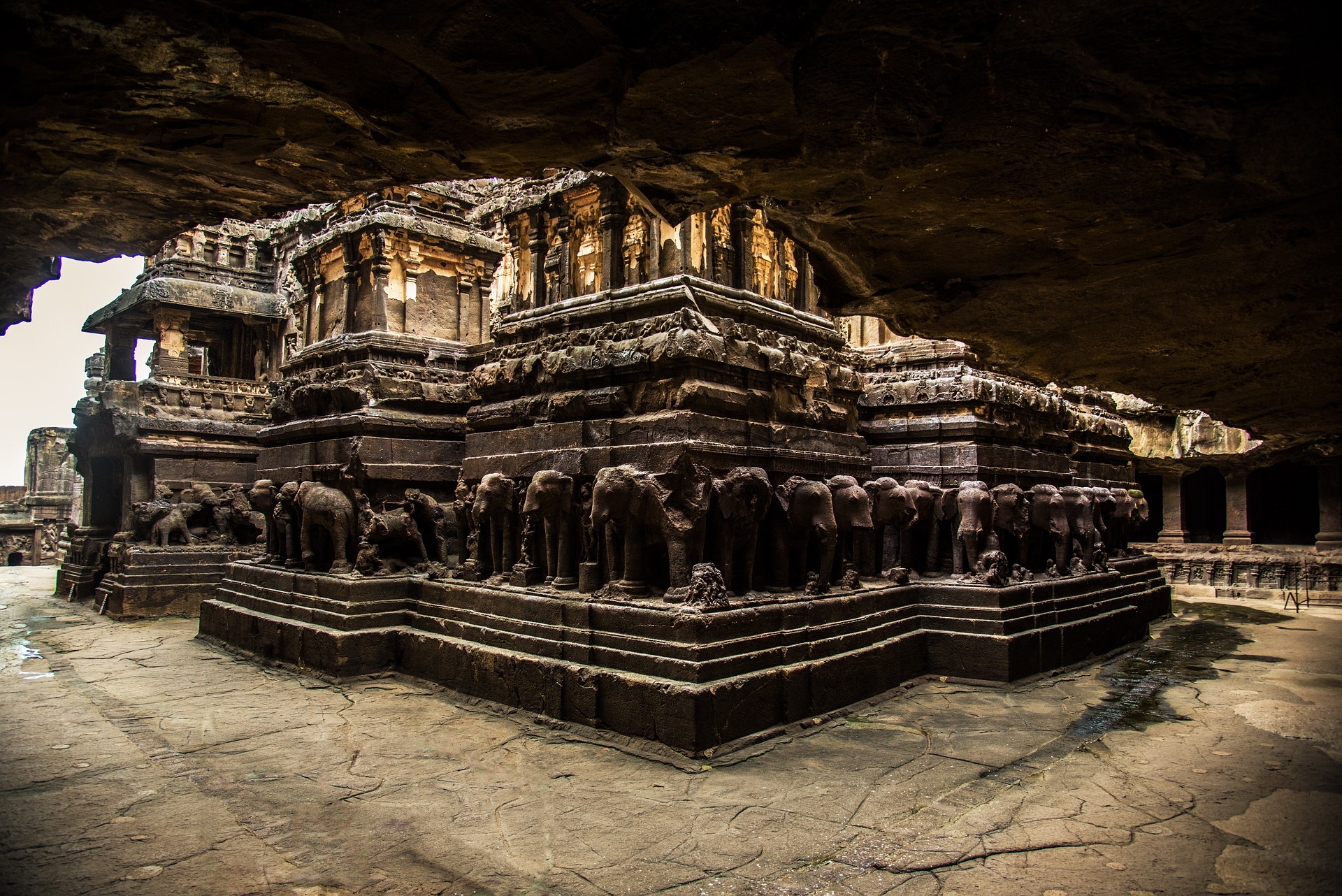Temples are not just religious structures, they are also works of tremendous architectural beauty of indian culture.Temple architecture vary from region to region in India. North Indian temples are typically composed of stone, while South Indian temples are primarily made of wood. Temples are very significant in the life of Hindus. Hindus believe that their gods and goddesses live in these temples. They visit the temples to pray and worship their deities.
This blog will show you about some of India’s most famous temples, which have played an important role in both national and global history for hundreds of years.
History
In India, a Hindu temple, known as a mandir, is a symbolic abode, seat, and body of divinity for Hindus. It is an architecture aiming to bring humans and gods together by employing symbols to represent Hindu concepts and beliefs. A Hindu temple’s symbolism and structure are based on Vedic traditions, employing circles and squares. It also reflects recursion and the portrayal of the equivalence of the macrocosm and the microcosm by astronomical numbers, and by “particular alignments relating to the geography of the area and the assumed links of the deity and the patron”.A temple includes every aspect of the Hindu universe, representing the good, bad, and human, as well as elements of the Hindu notion of cyclic time and the essence of life, metaphorically representing dharma, kama, artha, moksa, and karma.
The Hindu scriptures merged conceptions of heavenly energies with imagery perceptions, leading to the creation of Vigrahas, or the divine manifested in a manifest form, an image to be sanctified by mantras and other rites. The creation of this picture compelled its worshippers to shelter that celestial form. It gradually led to the emergence of the temple notion, first in the shape of little shrines or Sthana, and then in the form of gigantic constructions.
The Yantra design, a sacred geometrical diagram made up of squares, is the foundation of Indian architecture. It is known as the Vastupurushamandala, and it serves as the foundation for all traditional architectural work in India.
The Vastupurushamandala is a simple design in which many Gods and Demigods are grouped around a centre area or Bramhasthana for the presiding deity. The arrangement of Gods and Demigods around the centre area varies based on the ruling deity. The Vastupurushmandala therefore serves as the foundation for a Devalaya, or abode for the God.
Padmanabhaswamy Temple
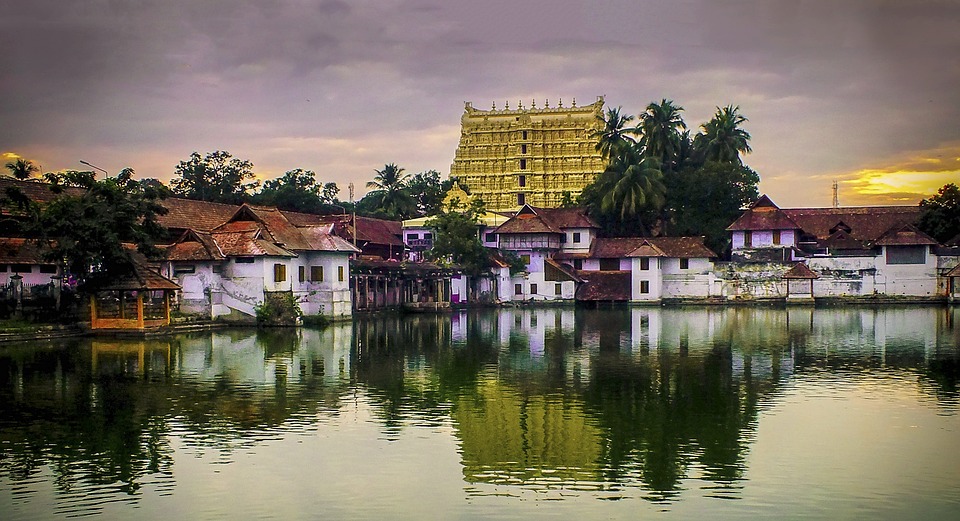
Sree Anantha Padmanabhaswamy Temple is a prominent Hindu temple in Thiruvananthapuram, Kerala. It is devoted to Lord Anantha, Lord Vishnu’s incarnation. Thiruvananthapuram properly means “The land of Lord Anantha”.
Padmanabhaswamy Temple architecture is a blend of Kerala and Dravidian styles, with a 100-foot tall gopuram (ornate entrance gate). Inside, in the main shrine, an 18-foot idol of the major god sits in the Ananthasayanam position on Adi Shesha.
Padmanabhaswamy Temple is among the 108 holy temples of Lord Vishnu, and it is one of the wealthiest temples in the world.
The temple has a long history, and its hidden treasure has piqued people from time to time.
Temple Architecture of Padmanabhaswamy Temple
Sree Padmanabhaswamy Temple Trivandrum is notable for its intricate stone and copper craftsmanship. The construction is a blend of Dravidian and Kerala styles, and the temple is similar to Thiruvattar’s Adi Kesava Perumal temple. Even the deities, laying in a reclined position, appear identical.
The first thing you will notice is the majestic seven-tiered high gopuram, which is sculpted with intricate motifs. The inside has a long corridor supported by artistically carved stone pillars and statues of numerous Hindu deities. Beautiful paintings cover the temple’s walls and ceilings throughout.
Thanjavur Temple
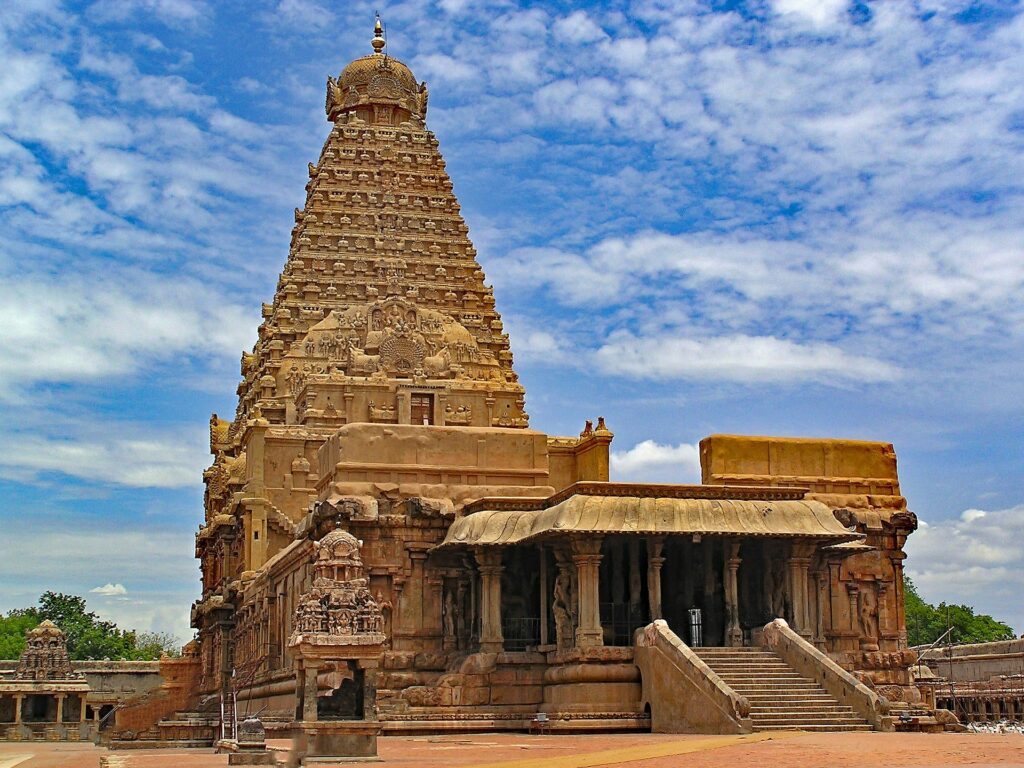
The Thanjavur Big Temple, also known as Thanjavur Brihadeeswarar Temple, is one of the world’s unsung marvels, with numerous undisclosed architectural mysteries that keep visitors intrigued even after 1000 years. Inside the Thanjavur Temple, there are endless wonders that will undoubtedly join the list of global wonders in the next days. It is one of the most appealing tourist destinations in Tamil Nadu, introducing tourists from various countries to the Chola Kingdom and its great architectural genius. The most startling aspect is that the shadow of the Thanjavur temple’s vimana or kalasam will not fall on the earth. The experts are still puzzled as to why the shadow isn’t descending.
Temple Architecture Thanjavur Brihadeeswarar Temple
The design and construction of the Peruvudaiyar Temple incorporated the principles of axial and symmetrical geometry. The Perunkoil (Madakkoil) is a significant temple constructed on a raised platform, whether natural or man-made. The temple complex spans nearly the size of two stacked squares, with dimensions of 240.79 meters from east to west and 121.92 meters (400.0 feet) from north to south. The five major sections of this chamber are the sanctum with the towering superstructure (sri vimana), the Nandi hall in front (Nandi-mandapam), the main communal hall (mukhamandapam), the large gathering hall (mahamandapam), and the pavilion that links the great hall with the sanctum (ardhamandapam).
By adopting architectural and decorative elements, the Peruvudaiyar temple continued the Hindu temple practices of South India, but its size far outstripped that of temples built before the 11th century. The Chola era architects and artisans developed the expertise to scale up and construct, especially with heavy stone, to achieve the towering vimana’s height of 63.4 meters (208 feet).
Tirupati Balaji Temple
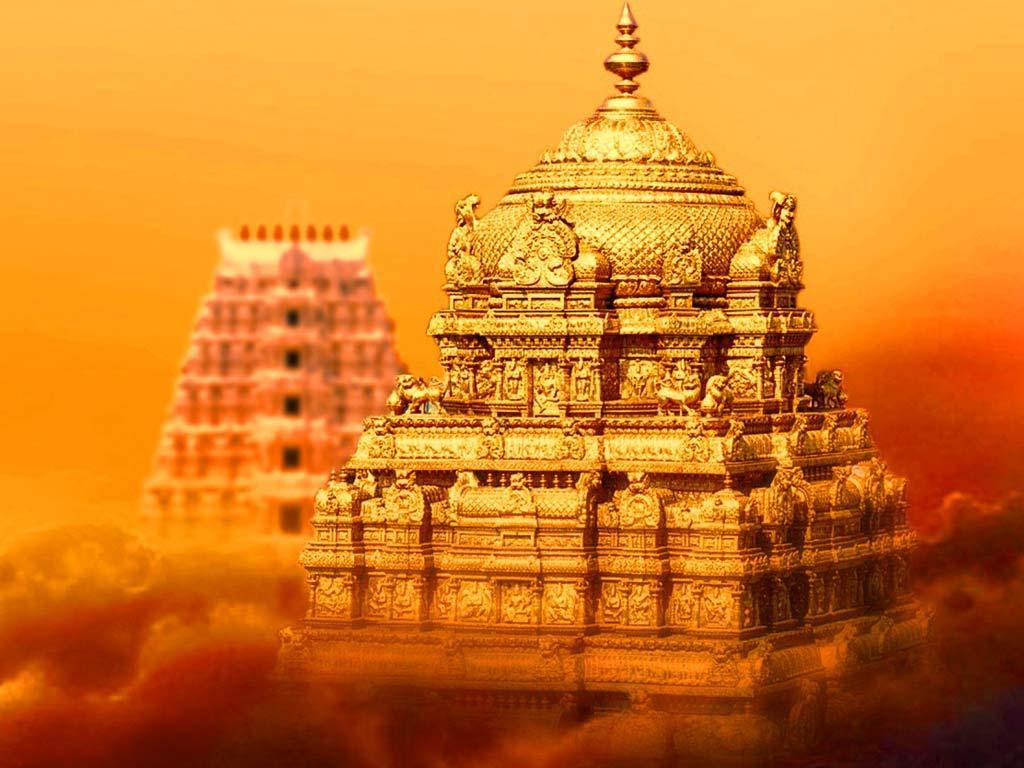
The Tirupati Balaji Temple, situated in Tirumal, Tirupati, Andhra Pradesh, is a renowned Hindu Vaishnavite temple devoted to Lord Venkateshwara, an incarnation of Lord Vishnu. It is believed that Lord Vishnu came to this place to rescue humanity during the challenging period of Kaliyuga. In this context, the site is referred to as Kaliyuga Vaikuntam, and the Lord is revered as Kaliyuga Prathyaksha Daivam.
The Tirumala hills are 853 metres above sea level and include seven peaks that depict the seven heads of Adisesha (the Holy Snake and Lord Vishnu’s guardian). Seshadri, Neeladri, Garudadri, Anjanadri, Vrushabhadri, Narayanadri, and Venkatadri are the names of the seven summits. The temple is located on the southern banks of Sri Swami Pushkarini, a holy water tank, on the seventh peak – Venkatadri. As a result, the temple is also known as the “Temple of Seven Hills”.
Temple Architecture Tirupati Balaji Temple
The Tirupati Temple is constructed in the Dravidian architectural style. The innermost sanctum, known as Ananda Nilayam, houses the presiding deity, Lord Venkateswara, facing east. Access to the inner sanctum is through three entrances or Dwarams.Mahadwaram from the outer compound wall, Vendivakili from the inner compound wall, and Bangaruvakili from the golden entry into the Garbagriha.
Sampangipradakshinam and Vimanapradakshinam are the two circumambulation pathways surrounding the temple. The ruling god stands with four hands, one in blessing pose, one on the thigh, and the other two holding the conch and chakra.
Virupaksha Temple
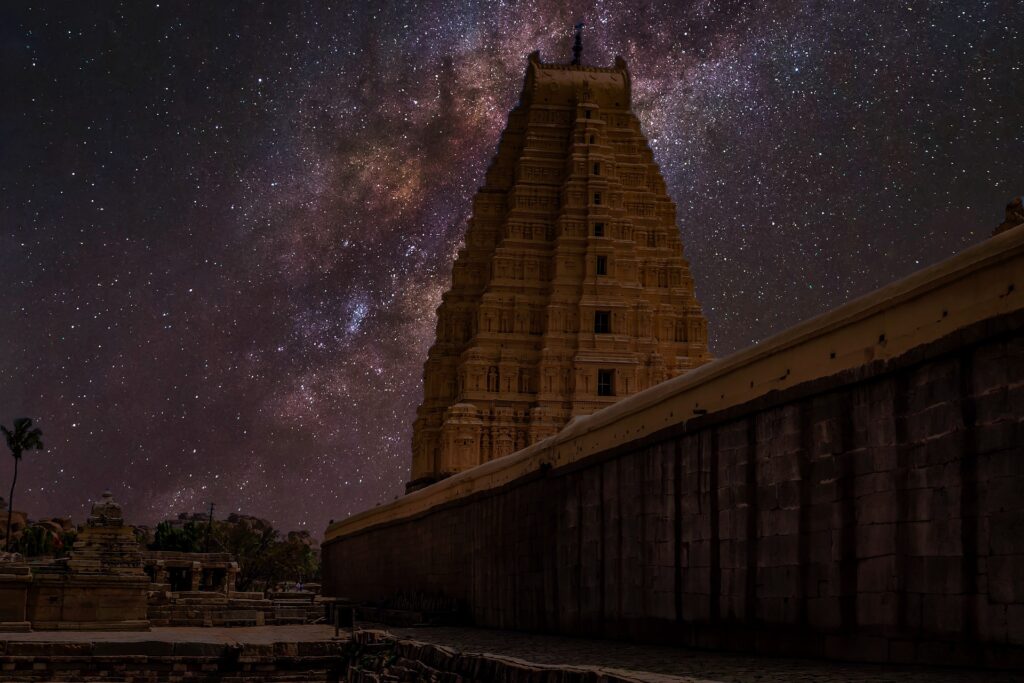
The magnificent Virupaksha Temple from Hampi’s ancient world represents the Vijayanagara empire’s imperial architecture. This temple honours the great Lord Shiva. Consequently, the sculptures and artwork within this shrine are entirely devoted to Lord Shiva, making it a true delight for Shiva enthusiasts. This temple, skillfully constructed under the supervision of Lakkana Dandesha, a renowned administrator during King Deva Raya II’s reign, showcases the grandeur and craftsmanship achieved by celebrated Indian architects.
It is near the ridges of the Tungabhadra River. By visiting this wonderful location, one may discover the beauty of both the temple and the river. This temple and the remains of Karnataka’s Hampi Empire are both designated as World Heritage sites by the prestigious organisation UNESCO.
Temple Architecture Virupaksha Temple
This temple’s construction began in the 9th century. It was formerly a tiny temple. However, it thrived during the imperial province of Vijayanagar administration. Since then, the kings have laboured tirelessly to have this temple built. As a result, with the backing of Vijayanagar architecture, this temple developed greatly in the 14th century. In reality, as it began to progress in the 14th century, Alauddin Khaliji destroyed this shrine. Muhammad bin Tughlaq likewise attempted to ruin its radiance. But later, in the nineteenth century, individuals worked hard to restore this temple, and with their help, it flourished once again. Today, it is one of the most beautiful Indian Heritage sites.
As evidence, a large number of individuals visit this lovely temple each year. And admire the dominance and unique spiritual emotions emitted by this temple. This temple still stands tall among the remains of the old Vijaynagar Empire in Hampi. This is evidence of the temple’s magnificent architecture. It is also one of the most popular historic temples in India among international tourists.
Konark Sun Temple
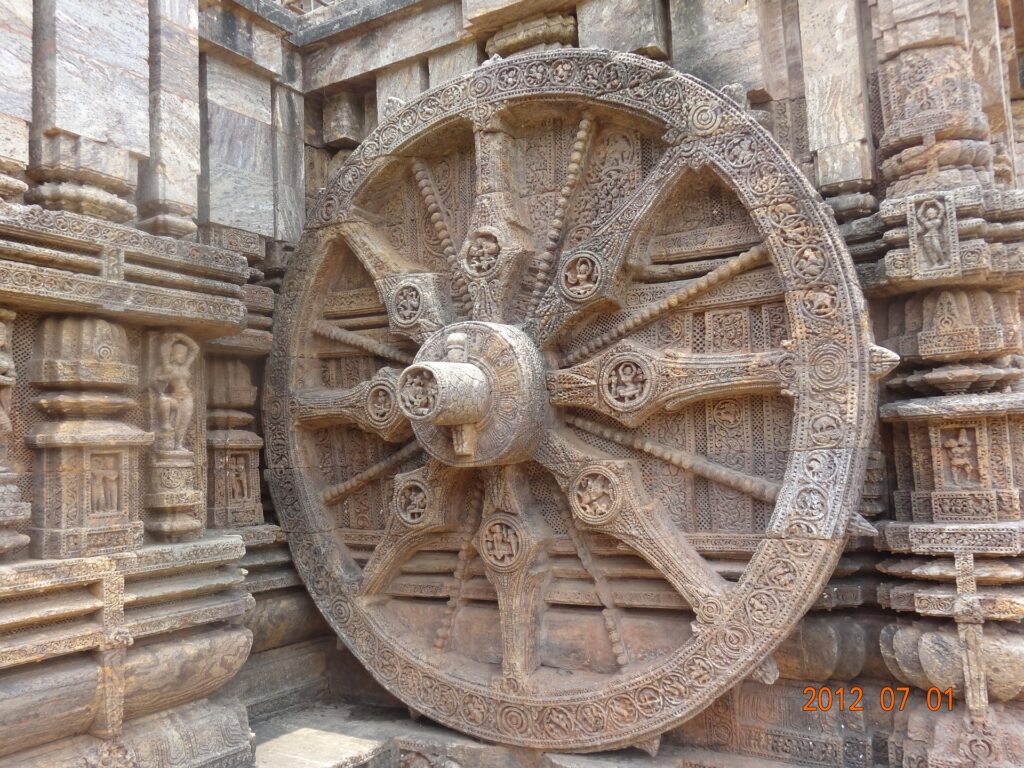
The Sun Temple at Konark, located on the east coast of the Bay of Bengal, is one of the most amazing views in Odisha. The 13th-century temple complex is devoted to Surya, the Sun God, and is sculpted as a gigantic decorated stone chariot driven by seven stone horses. The temple, also known as the Black Pagoda, is an astonishing architectural marvel that draws visitors, historians, and archaeologists from all over the world. It is a couple of hours’ drive from several of Odisha’s biggest cities, including Bhubaneshwar and Cuttack.
Temple Architecture Konark Sun Temple
The Sun Temple in Konark is a spectacular example of ancient Odisha architecture, commonly known as Kalinga architecture. It envisions a colossal chariot, powered by seven sturdy stone horses and supported by 12 pairs of beautifully carved giant stone wheels. The temple’s orientation is to the east, allowing the morning sun’s first rays to illuminate the main entrance. This primary gateway is accompanied on both sides by two massive stone lions, both of which depict the lions standing over an elephant and a man underneath them.
The temple complex has 26 acres of land.The temple was constructed using three different types of stones: chlorite, laterite, and khondalite. It featured a central sanctuary known as Bada Deul or Rekha Deul, surrounded by smaller structures. In front of the main sanctuary, there was a smaller sanctum called Bhadra Deul or the people’s meeting hall. The main sanctuary was estimated to have a height of approximately 225 feet, but no remnants of it exist today.
The smaller sanctuary, which is a spectacular construction in its own right, has survived the years. Standing at a height of over 100 feet, it boasts magnificent stone sculptures. Similar to the Khajuraho Temple in Madhya Pradesh, this shrine is renowned for its exquisite artwork, themes, and iconography, which include sensual depictions. Besides this small sanctum, several additional buildings and sanctums have been conserved. These include the Nata Mandir, or dancing hall, the temple of the nine planets, and the kitchen, or Bhoga Mandapa.
Jain Temple Ranakpur

Despite the fact that Rajasthan has several Jain temples. None, however, can compete with Ranakpur’s Jain Temple. This temple clearly represents the rich Jain tradition and is an architectural marvel in its own right. In reality, it is the pinnacle of aesthetic expression. While it was built in 1437 CE. This temple may be found at Ranakpur, Udaipur, Rajasthan. It also reflects the importance of the godhead Tirthankara Rishabhanatha. The overall architectural style of this temple is Maru-Gurjara. However, the intricate patterns represent the wealth of past art and sculpture. The temple’s interior has beautiful sculptures on white marble. Did you realise that this temple has 1400 distinct pillars? This implies that no two pillars have the same design!
Temple Architecture Jain Temple Ranakpur
The Ranakpur Temple complex includes the Chaumukha Temple, the Parsavanath Temple, the Amba Mata Temple, and the Surya Temple. The Chaumukha Temple is the most visible of them. The Chaumukha temple dedicates itself to Adinath, the first Tirthankara. It takes the shape of a celestial aeroplane, featuring 29 chambers, 80 domes, and 1,444 pillars adorned with intricately carved goddess images.. The eye-catching temple features four entrances on four sides, leading to the centre chamber and shrine, which houses a figure of Lord Adinath.
The temple’s building style and quadrupled image represent the Tirthankara’s mastery of the four cardinal directions and hence serve as a symbol of cosmos. The architecture is inspired by the old Mirpur Jain Temple in Mirpur, Rajasthan.
The Ranakpur Temple complex has a basement of 48,000 square feet and consists of four shrines with pillared halls and domes supported by 1,444 finely carved columns. There are no two columns in the temple that are same. Exquisite carvings adorn the ceilings, featuring intricate scrollwork and geometric motifs. Deity images embellish the brackets connecting the domes to the floor, while the dome itself is divided into concentric bands.
Kailasnath Temple Ellora
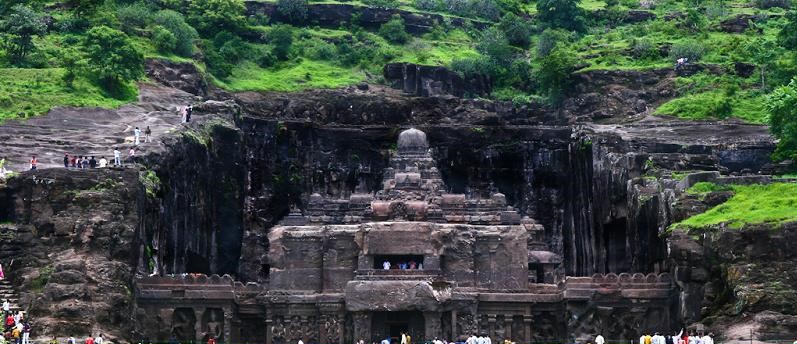
The Kailasa or Kailasanatha temple is the oldest of the rock-cut Hindu temples in Maharashtra’s Ellora Caves. Due to its size, construction, and sculptural treatment, it earns the distinction of being one of the most astounding cave temples worldwide and is often referred to as “the apex of the rock-cut period of Indian architecture.” The top of the superstructure above the sanctuary is 32.6 metres (107 feet) above the level of the court below, despite the fact that the rock face slopes gradually from the rear of the temple to the front. Archaeologists think it was constructed out of a single piece of granite.
Temple Architecture Kailasnath Temple Ellora
The architecture of the Kailasa temple is distinct from the previous Deccan style. The entrance to the temple courtyard is guarded by a modest gopuram. The bulk of the deities on the left side of the entryway are Shaivaite (associated with Shiva), while the Vaishnavaites are on the correct hand. A two-story entrance opens to expose a U-shaped courtyard. At its broadest point, the courtyard spans 82 m x 46 m. A three-story-high columned arcade surrounds the courtyard.
Enormous carved panels and alcoves with massive statues of various deities divide the arcades. They galleries were once linked to the primary temple complexes by stone flying bridges, but these have now crumbled. Some of the most renowned sculptures include Shiva the ascetic, Shiva the dancer, Shiva being warned by Parvati about the evil Ravana, and the river goddess.
The lower floors of the Nandi Mandapa are both substantial buildings with extensive illustrative sculptures. Elephants engraved on the temple’s base support the building. A rock bridge connects the Nandi Mandapa to the temple’s porch. Scenes from the Mahabharata and Ramayana decorate the foundation of the temple hall.
Meenakshi Temple
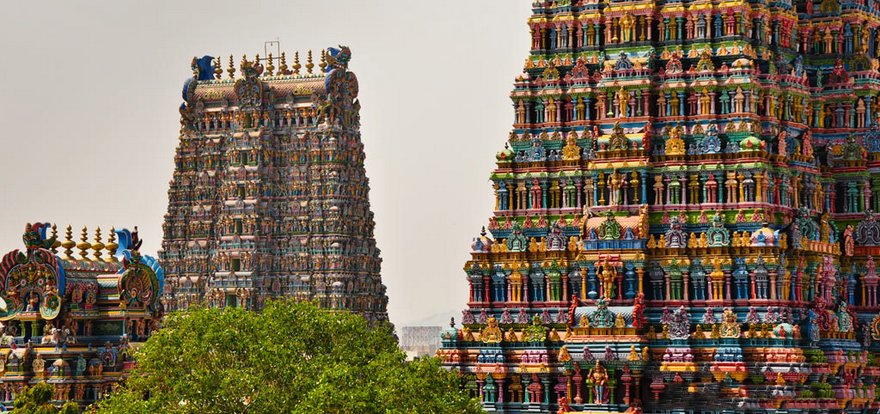
The temple, built in the Dravidian style, is located across 14 acres in the heart of Madurai. Massive walls encircle the temple, constructed as a response to invasions. The entire building resembles a mandala when viewed from above. A mandala is a structure built using principles of symmetry and location. Within the temple, additional shrines have been constructed.Aside from the two major shrines devoted to Sundareswarar and Meenakshi, the temple also features shrines dedicated to other gods and goddesses like as Ganesha and Murugan. The goddesses Lakshmi, Rukmini, and Saraswati also reside at the shrine.
Temple Architecture Meenakshi Temple
The Meenakshi Amman temple is a magnificent example of Dravidian architecture. The temple covers an area of six hectares and boasts 14 gopurams, with the largest one measuring 52 meters located at the southern end. Additionally, the temple complex is divided into sections, each having four entrances aligned with the four cardinal directions. The temple worships the principal goddess Meenakshi, who is alongside her divine spouse Sundareswarar.
Three buildings encircle the main temple, housing statues of the principal deities. Meenakshi, made from black stone and adorned with precious diamonds, adorns the main temple. Gilded towers embellish the construction, enhancing the monument’s magnificence. The Meenakshi Temple in Madurai exemplifies temple architecture. The place is simply stunning and showcases the diverse history of India.
Jagannath Puri Temple
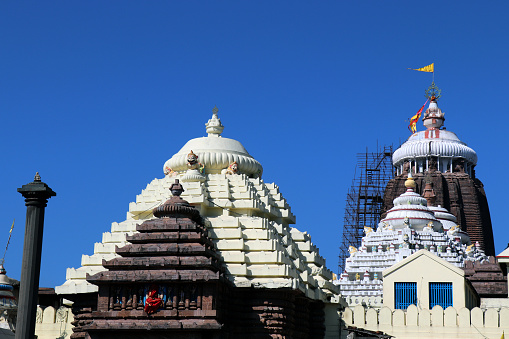
Puri is a small region that can be explored on foot for the most part. The Jagannath temple and its courtyard are the city’s most important nodes. They tie together all of the numerous zones and features that contribute to Puri’s current vibrancy as a dynamic little Temple Town. Furthermore, the temple is the city’s most prominent landmark; many avenues radiate from here, all of which have significant architectural, historical, and cultural worth.
Temple Architecture Jagannath Puri Temple
A variety of unique elements have influenced Puri’s architecture over the years. The city’s layout, which is radial in form, is directly influenced by the fact that the Jagannath Temple, the city’s main temple, is positioned on the highest ridge, encircled by lower lands in all directions.. The Gundicha temple is located on another mountain, which gave rise to the Grand Road, or Bada Danda.
As a result, locations on lowlands have greater plinth levels than areas on higher lands, even though they are in the same neighbourhood.
The current and extinct water bodies such as rivers, tanks, and the sea are also crucial. Three major rivers, Musa, Mangala, and Malini, supplied the town, leading to the creation of several life-sustaining reservoirs like the Markandeya and Narendra tanks. Although the rivers have dwindled into small streams, and the tanks have mostly become stagnant, the city’s unique architectural pattern around them still defines its distinct personality. They are now important social gathering places.
The Golden Temple
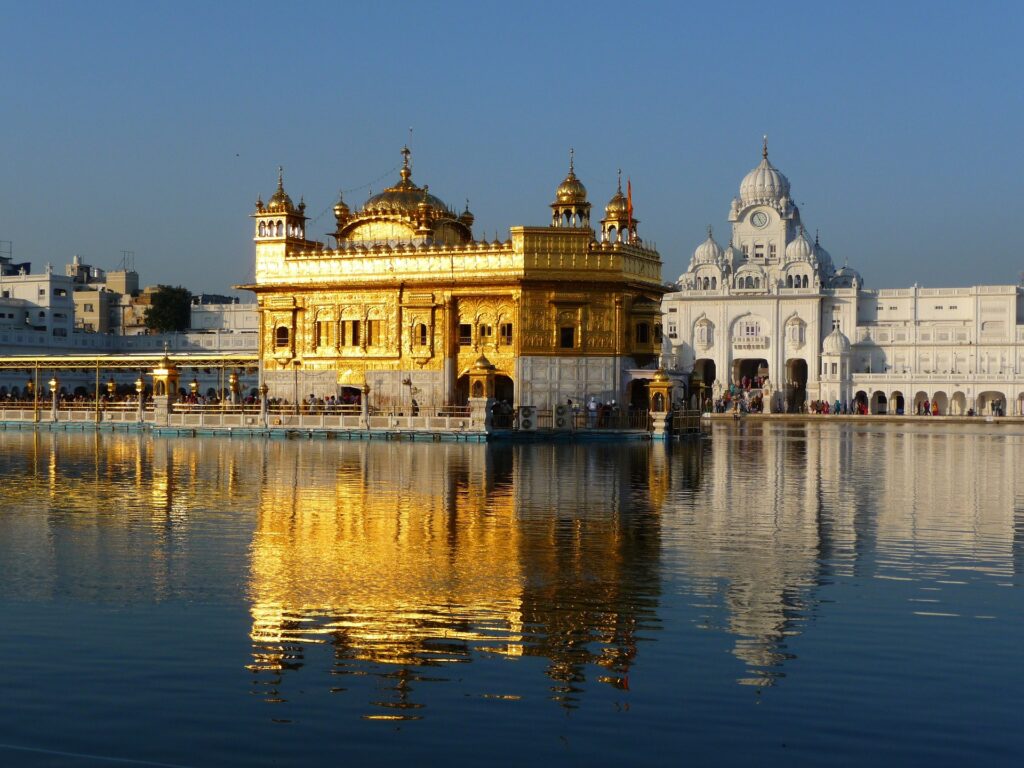
The Golden Temple in Amritsar, also known as Sri Harmandir Sahib, is a well-known gurdwara in Punjab. The temple is one of the most well-known spiritual destinations, providing tranquilly and spiritual significance to all visitors, regardless of caste or creed.
The Golden Temple is well-known for its stunning architecture, golden leaf structure, Kadah Prasad, Guru Ka Langar, and much more. Let us now study more about the Golden Temple in Amritsar, including its history, construction, infrastructure, and real estate.
Temple Architecture The Golden Temple
The Golden Temple in Amritsar is noted for its blend of Hindu-Rajput and Indo-Islamic architecture. Moreover, the temple stands 67 feet tall and is built on two levels. It features a gold leaf dome and is approximately square in form.
Here are a few suggestions to help you comprehend what the inside of the Golden Temple looks like, as well as its architecture.
The Sanctum of the Golden Temple includes a 19.7 x 19.7-meter square marble platform set inside the man-made pool. This pool is known as the Amrit Sarovar. The temple’s exquisite marble is adorned with flower designs and animals. The Taj Mahal’s walls also have nearly identical construction.
The water inside the Golden Temple in Amritsar is 5.1 metres deep. It is enclosed by a 3.7-metre-wide clockwise-circled marble corridor. Bathing in this pool, according to many Sikhs, may help people cleanse their karma and receive healing abilities. Some of them even bring this water home for ailing friends and family.
Gold leaf and panels carve the upper half of the Golden Temple, crowning it with a 400 kg gold dome. Inside the Golden Temple, priests can be seen chanting the Guru Granth Sahib throughout the entire day.
Also Read: Rameshwaram Jyotirlinga: History, Darshan Timings and More

